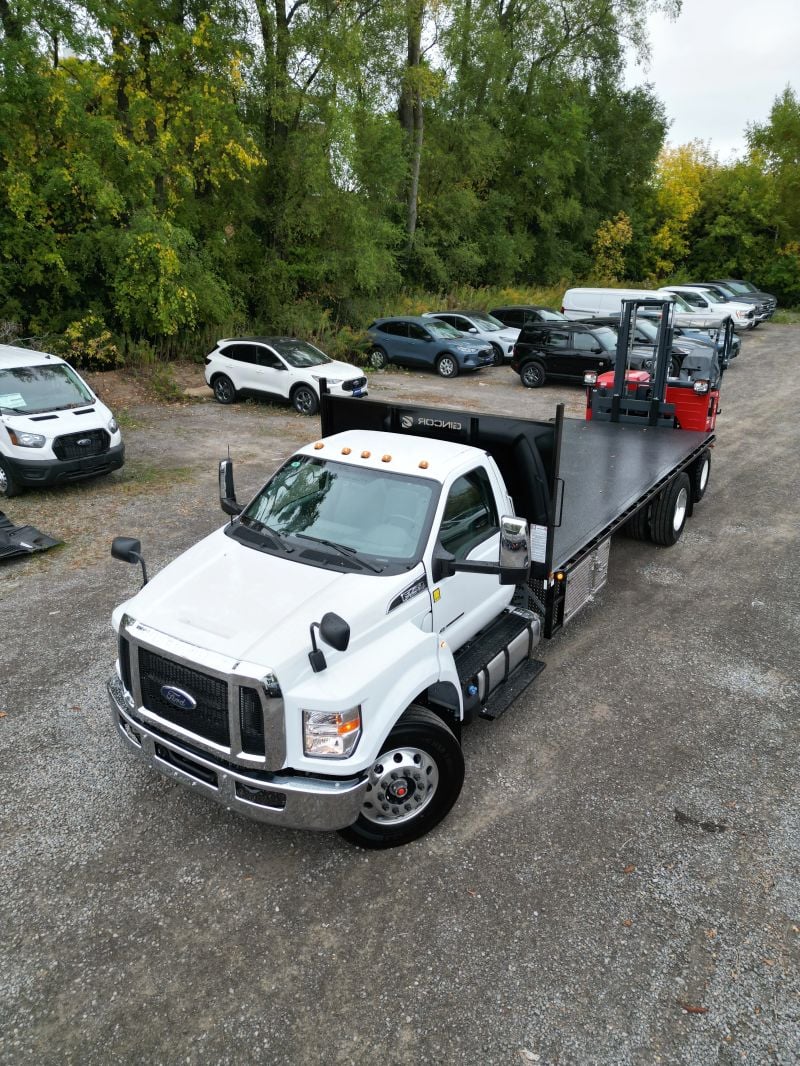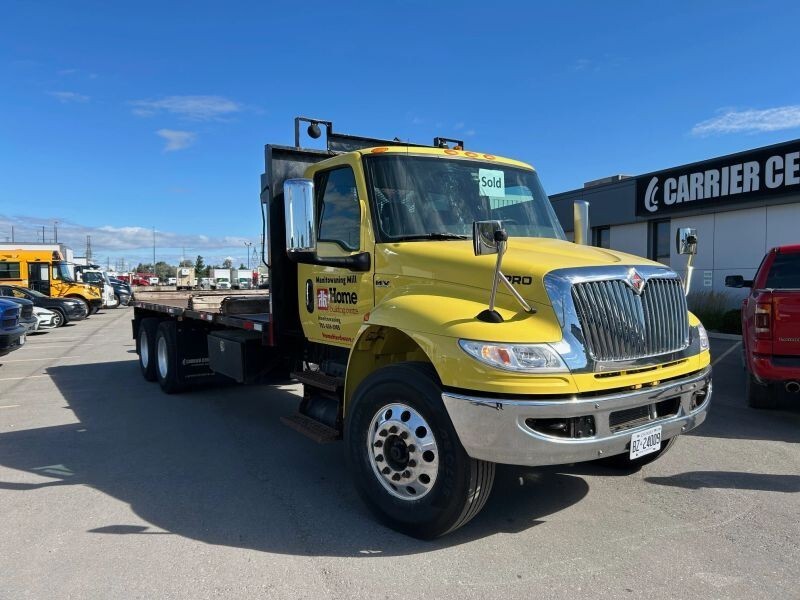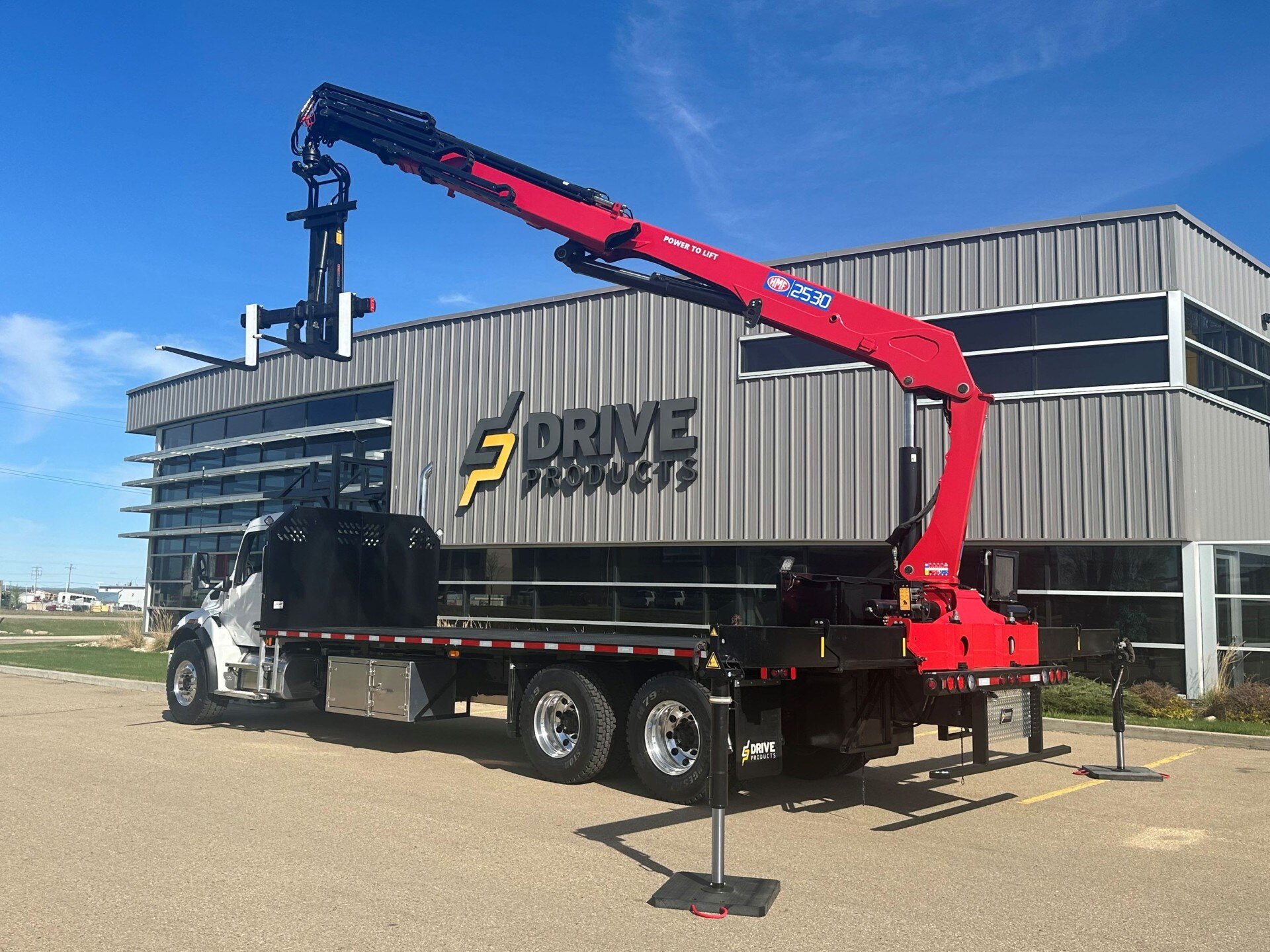The Ultimate Guide to Spec’ing Your Next Flatbed Truck for Lumber & Building Materials
If you’ve ever stood in your yard, staring at a loaded flatbed and muttering “we should’ve gone with the longer deck,” this one’s for you. Spec’ing a flatbed truck isn’t just about what looks good on paper — it’s about matching the equipment to how your crew actually works. Whether you’re delivering engineered lumber to tight urban sites or full lifts of shingles to the edge of a lake lot, the wrong spec costs you time, money, and customer satisfaction.
Let’s walk through the real-world decisions that separate a truck that makes money from one that’s a headache every week.

1. Start with the Workload — Not the Wish List
Too many owners spec trucks based on “what we might need someday.” That’s how you end up with a 24-foot bed running half-empty loads 80% of the time.
Start by tracking what you actually deliver:
-
How often are you hauling full lifts versus mixed drops?
-
Are most loads under 10,000 lbs or pushing 18,000?
-
Do you need rear-mounted forklifts (Moffetts/Piggybacks), or are most jobs crane deliveries?
If you’re doing mainly tight residential jobs around town, a 19’ to 21’ flatbed with a single axle chassis might make more sense than a heavier tandem setup. Lighter means better fuel economy, easier maneuverability, and lower plate costs.
If you’re hauling long engineered lumber or full pallets of roofing, go longer — 22’ to 24’ — and make sure your GVWR spec leaves room for payload growth. The right spec starts with honest workload data, not wishful thinking.
2. Chassis: Get the Foundation Right
The flatbed is only as good as what it’s sitting on. Your chassis choice decides ride quality, turning radius, and long-term reliability.
Here’s what to focus on:
-
Wheelbase: Impacts turning radius. A 240” wheelbase handles tight yards far better than a 270”.
-
Axle Rating: Don’t run your truck at max legal weight every day. Spec at least 15–20% margin above your average payload to avoid suspension fatigue.
-
Transmission: If your drivers spend most of the day in city traffic, automatic transmissions reduce fatigue and clutch wear. Rural or highway-heavy routes? Manuals still offer better control and slightly better fuel economy.
Pro tip: Stick with brands your local service network supports. A truck sitting two weeks waiting for a proprietary part out of the U.S. will cost more than you save on day one.
3. Deck Construction — Steel vs. Aluminum vs. Composite
Deck material is one of the most overlooked choices when spec’ing a new flatbed.
-
Steel decks are durable and budget-friendly but add weight — usually 500–800 lbs more than aluminum on the same size deck.
-
Aluminum decks resist corrosion and help keep you under GVWR with a forklift on the back.
-
Composite (wood-aluminum hybrid) options give grip and flexibility — great for wet, icy conditions — but come at a premium cost.
If your operation uses salt-treated lumber or operates through salty Ontario winters, aluminum is often worth the investment just for corrosion resistance.
4. Forklift or Crane? That’s Your Biggest Fork in the Road
Your delivery method defines your build.
Rear-Mount Forklift Setup
For Moffett-style operations:
-
You’ll need a reinforced rear mount kit and tapered bumpers.
-
Watch your overhang — a 24’ deck with a 4’ forklift on the back can affect turning radius and bridge law compliance.
-
Always spec a reinforced subframe to handle the extra rear weight.
Boom Truck Setup
For knuckle or stick boom applications:
-
Your front axle rating and frame reinforcement must handle lift stress.
-
Go with outrigger-ready frames and PTO provisions pre-installed.
-
Ensure your boom placement doesn’t steal too much deck space from the payload area.
You can’t easily convert from one to the other later — so decide early whether your delivery model is “carry it there” or “lift it there.”
5. Payload Math: Where Margins Disappear
It’s easy to forget that every feature you add — toolboxes, racks, hydraulic kits — eats payload.
A few quick numbers:
-
Average tandem chassis: 10,000–12,000 lbs curb weight.
-
Aluminum deck: 2,000–2,500 lbs.
-
Moffett mount + forklift: 6,000–7,000 lbs combined.
That means you’re already 18,000–20,000 lbs before a single piece of lumber hits the deck.
Rule of thumb: Always spec for at least 2,000 lbs more payload than your heaviest expected load. That buffer saves you from fines, mechanical wear, and warranty issues.
6. Accessibility & Driver Safety — Don’t Skip This
We’ve all seen drivers jump off the deck instead of using the steps. That’s an injury waiting to happen and a comp claim waiting to land.
Add:
-
Fold-out steps with grab handles (under $300 installed).
-
Work lights at the rear for early morning or dusk drops.
-
Non-slip decking strips for winter traction.
-
Backup cameras and alarms — essential in urban lots and condo sites.
The right safety spec keeps your people healthy and your insurance rates steady.
7. Financing and Replacement Timing
If you’re still running a 2010 truck that’s costing you $15,000+ in annual maintenance, you’re bleeding money.
Right now, many builders are financing trucks over 60–72 months, with monthly payments often offset by reduced downtime and better fuel efficiency.
A new flatbed with a proper spec can save:
-
1 hour/day in loading/unloading
-
10–15% in fuel
-
Thousands in unscheduled maintenance
Those savings go straight to your bottom line — or make the financing payments for you.
If you’re not sure how to compare options, that’s where I come in. I help Canadian building centers match the right spec to their actual delivery profile — no upsell, just smart specs.
Conclusion: The Right Spec Pays for Itself
A flatbed that’s spec’d right for your operation feels effortless — it loads faster, turns tighter, and doesn’t nickel-and-dime you in repairs. The wrong spec? It’ll remind you every single delivery.
If you’re planning your next truck and want a sanity check before ordering, give me a shout. I’ll tell you exactly what to watch for — and what’s worth spending on — based on your yard setup, routes, and delivery style.
Because in this business, the best trucks aren’t the biggest or flashiest — they’re the ones that fit your work like a glove.



